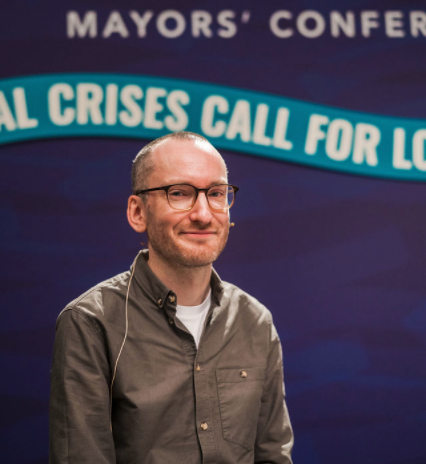In our last blog, we described the importance of local innovation when it comes to tackling global problems. In this blog, we go into more detail about how innovative solutions to local challenges can be quickly developed and tested using the ACT NOW Sprint.
The ACT NOW Sprint was put into practice for the first time in early September of 2021 with young activists in Prishtina, Kosovo. The teams came up with projects to make their city more sustainable, tackling issues like littering or poorly developed cycling infrastructure. The projects are currently being implemented and make a real life impact in the urban landscape.
In November, 25 cities from the MENA regions will participate in the Local Labs and the ACT NOW Sprint.
The Ingredients of the ACT NOW Sprint
The ACT NOW Sprint draws inspiration from design sprints and hackathons. The idea is that a group of participants form a team for a limited number of days and work through a fixed process. The team members should represent different aspects of the local community – from public administrators and young activists to local business owners, and civil society organisers. This ensures that the end result reflects a multitude of perspectives and addresses the actual needs of the citizens. The team comes together in a creative space and is guided through the different steps by a Sprint Mentor. To allow for true innovation, it is crucial that the team members are comfortable with each other. Challenging dynamics like hierarchies should therefore be taken under consideration.
The phases of the ACT NOW Sprint
- Understand and Define
The first step in the ACT NOW Sprint is about understanding the challenge that the team wants to tackle. This means they should establish a common understanding of the status quo and specify the ways in which they want to change it. By the end of this step, they should have defined the need of a citizen/user/person that the project idea will address. Helpful tools at that stage are Personas and Stakeholder Mapping. During this step, the team also gets to know each other and agrees on certain rules and roles they want to maintain throughout the entire process.
- Envision and Ideate
In this phase, the team develops ideas about how to fulfill the need they defined in the previous step. By the end, they should have chosen one idea they want to pursue further. At this stage, international local change experts share some inspirational projects they have worked on, and are available to the team to contribute insights and helpful tips. Other tools for ideation are the variety of brainstorming techniques out there.
- Prototype and Test
In this step, the team should make the idea they chose as specific and tangible as possible so it can be shared with other stakeholders, teams and the expert committee. This means it can be presented to and tested on potential users and experts.
They can do this in several ways, for example with a text, a slide deck, a video or drawings. The idea is that they can be as creative as they like with the prototypes. Feedback can help to improve the solution even further. By the end of this phase, the team should have developed a concrete road map that they will follow to make their project a reality once the ACT NOW Sprint has ended.
The next blog will focus on the Local Labs event and the projects that emerged from it.


